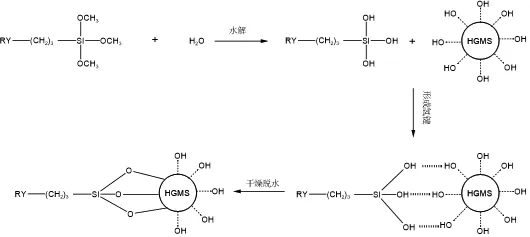News
Surface Modification Principle of Inorganic Powder Materials
Release time:
2023-12-15
Inorganic powder materials are generally metal or non-metal oxides. When applied to organic composite materials, it is sometimes necessary to add a compatibilizer to enhance the interfacial compatibility with the organic polymer matrix. In production operations, the compatibilizer is usually added directly to the formulation system, and sometimes the surface of inorganic powder materials can be modified to improve their compatibility with organic materials.
Surface Modification of Inorganic Powder Materials
The commonly used modification processes of inorganic powder materials mainly include dry modification, wet modification and composite modification. Dry modification is inorganic powder material in a relatively dry state dispersed in the modification equipment, and with a certain amount of surface modifier in a certain temperature to achieve the modification of atomization. Dry modification process is simple, low production cost, is the main way of domestic powder surface modification. Wet modification refers to wetting inorganic powder materials under liquid phase conditions, reducing the binding energy of the surface, and then adding a certain amount of surface modifiers and additives, stirring and dispersing at a certain temperature to achieve surface modification. The wet modification process can make the powder and the modifier more easily dispersed and more fully combined, but the subsequent dehydration drying operation is required, the process is relatively complex. Composite modification refers to the combination of dry and wet modification processes to further improve the activation degree of inorganic powder materials.
Surface Modification Principle of Inorganic Powder Materials
The surface modification of inorganic powder materials can be divided into organic modification and inorganic modification, and the most commonly used modification method is organic modification. Organic modification is a method that uses functional groups in organic matter to change the surface properties of inorganic powder materials by physical adsorption, chemical adsorption and chemical reaction. At present, the most commonly used organic modifier is silane coupling agent, mainly including amino, epoxy, vinyl, thiol and other types, the modification effect is usually better, there are also some use of aluminate, titanate, stearic acid and other modifiers for surface modification, but the modification effect is often not as good as silane coupling agent. Inorganic modification refers to coating or composite metals, inorganic oxides, hydroxides and other inorganic substances on the surface of inorganic powders, giving new functionality to inorganic powder materials and meeting the special application requirements of various industries for inorganic powder materials.
The modification mechanism of silane coupling agent believes that two groups with different properties of silane coupling agent, including vinyl group, epoxy group, amino group, methacrylate, mercapto group at one end, react with the functional group of organic polymer, so as to realize the combination of silane coupling agent and organic polymer base material, and the alkoxy group (such as methoxy group, ethoxy group) at the other end reacts with the Si-OH group on the surface of inorganic powder material, going through three processes of hydrolysis, forming hydrogen bond, respectively: ① hydrolysis, silane coupling agent and Si connected to the 3 alkoxy hydrolysis to form silanol. The formation of hydrogen bonds, low polysiloxane and powder material surface-OH to form hydrogen bonds. The formation of covalent bonds, in the process of heating, condensation, dehydration and other chemical reactions occur, so that the silane coupling agent and inorganic powder materials between the formation of a strong Si-O-Si covalent bond, become a link between the resin or organic polymer base material and inorganic powder materials. Taking the hollow glass microsphere as an example, the modification mechanism is schematically shown in FIG. 1, wherein RY is a functional group that can be connected to a high molecular polymer.

Fig.1 Schematic diagram of modification mechanism of silane coupling agent
Related News

